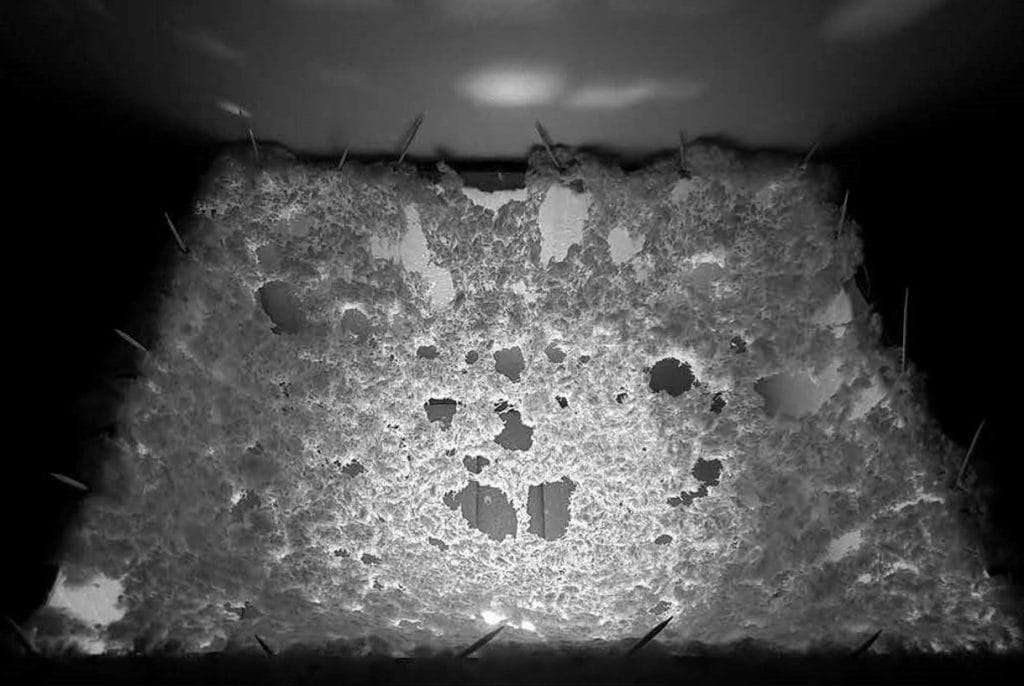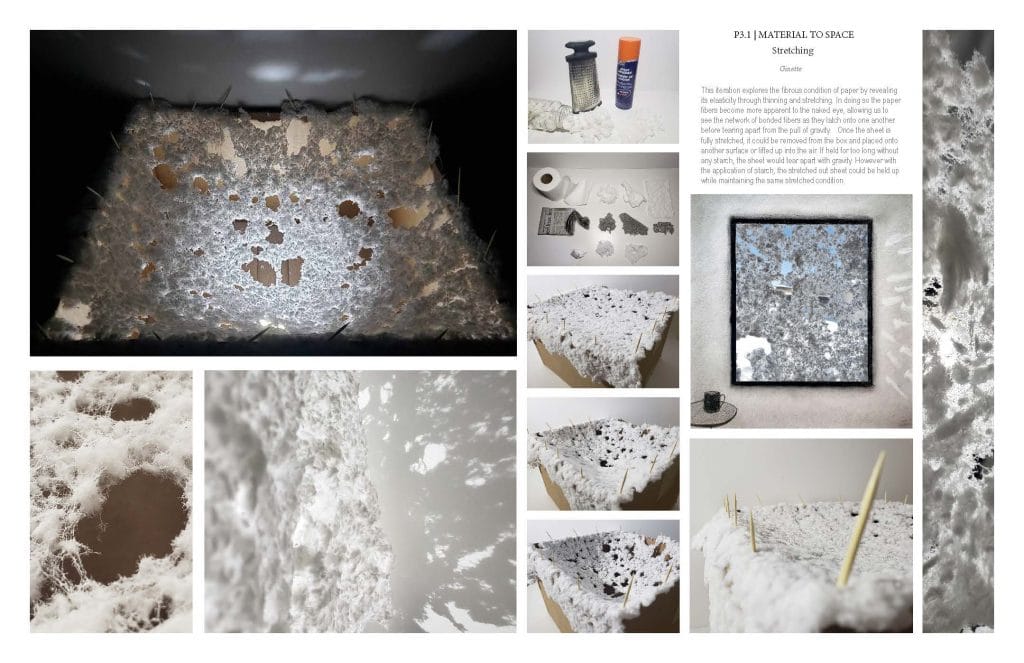P3.1 Material to Space (Material)
Instructors: Jae-Sung Chon, Kim Wiese, Leanne Muir, Ryan Coates, Tony Neustaedter and Kailey Kroeker
EVDS 2900
Year 2 Environmental Design
How and when do materials appear and emerge into space? How can we manipulate materials? How can materials interact with space? How can materiality affect spatial ambiances? How can we manipulate light and spatial experience through material modification?What are the creative opportunities and design implications of a light-material-form-space relationship? Can the presence or absence of light be modulated through a material (and its materiality)? How can such a relationship frame artistic, conceptual, expressive, and spatial experiences? How do we discuss and experiment with the modulation of light through materiality?
Can we embed meaning in materials through tooling and technique?
Can new materiality emerge through re-use? How can our design address the advancements and challenges of inherited materiality that we witness today?
P3.1 seeks to explore:
- material modification and understanding through technique and tooling
- the aesthetic and experiential meaning of materials
- the taxonomy of form and the act of conveying and animating space through light
- the communication of operative elements of the modified material
Ginette Dupas
Stretching
Throughout this year I feel that I was able to learn a lot more than I anticipated. In the start it was a little hard with how much work each of us had to put in, but through time I was able to adjust to it and almost learn how to properly manage my own time (however I still need a lot more practice). I enjoyed learning the proper techniques on how to draw, starting with simple lines, to shading techniques and then perspectives. Each of these skills help me to grow as an artist and a designer, as I am now able to apply these same techniques to my digital drawings, plans, sections and collages. All the studio projects were challenging in their own way however, they each taught us important skills and knowledge as the year went on. In P2 I really enjoyed being able to study a site and seeing how important the context of a site can be when trying to implement a design. In P3, I really enjoyed how ‘hands on’ it was, being able to work with and explore different materials, how many different things a material can do and how they each interact and react with specific lighting conditions. All in all, this year was a challenging yet amazing experience and I’m really excited to see what the next few years will surprise me with.
This iteration explores the fibrous condition of paper by revealing its elasticity through thinning and stretching. In doing so the paper fibers become more apparent to the naked eye, allowing us to see the network of bonded fibers as they latch onto one another before tearing apart from the pull of gravity. Once the sheet is fully stretched, it could be removed from the box and placed onto another surface or lifted up into the air. If held for too long without any starch, the sheet would tear apart with gravity. However with the application of starch, the stretched out sheet could be held up while maintaining the same stretched condition.


